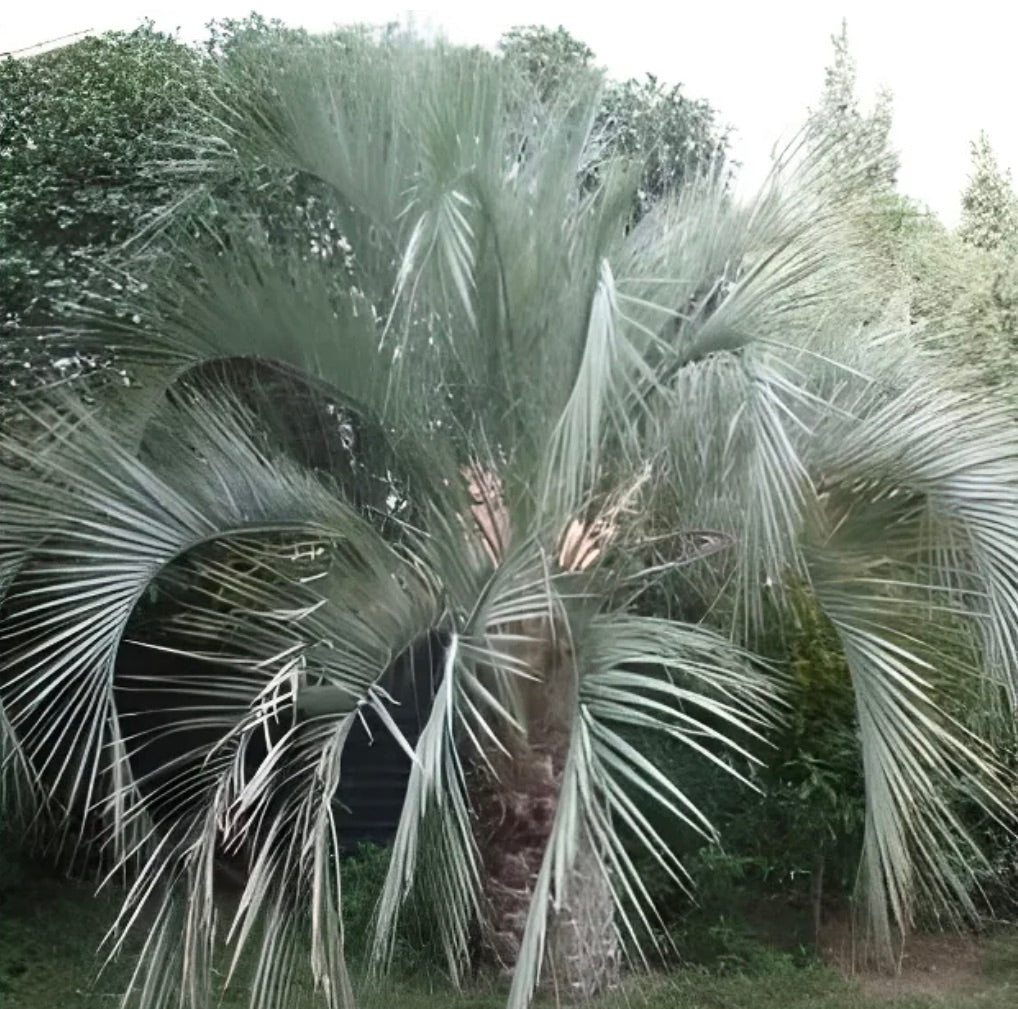Butia eriospatha, commonly referred to as the Woolly Jelly Palm, is a distinctive species of palm native to the southern regions of Brazil. It is well-regarded for its striking appearance, characterized by a thick, woolly covering on its spathes (the protective sheaths from which the flower clusters emerge), giving it the name "eriospatha," which means "woolly spathe." This palm species grows to a moderate height, typically reaching up to 6 meters (about 20 feet), and features blue-green, pinnate leaves that arch gracefully, creating a visually appealing silhouette. The Woolly Jelly Palm produces edible fruits that are enjoyed by both humans and wildlife, contributing to its popularity in horticulture and landscaping.
Cultivation from Seeds:
-
Seed Preparation: Before sowing, Butia eriospatha seeds require a period of stratification to break dormancy. This involves soaking the seeds in warm water for 1-2 days to soften the hard outer shell and promote germination.
-
Sowing: Plant the seeds in a well-draining soil mix, ideally a combination of sand, peat, and vermiculite to ensure good drainage and aeration. The seeds should be placed about 1-2 cm deep in the soil.
-
Germination Environment: Maintain the pots in a warm, humid environment with consistent temperatures of about 25-30°C (77-86°F). Covering the pots with plastic wrap or placing them in a greenhouse can help retain moisture and warmth, essential for germination.
-
Watering: Keep the soil evenly moist but not waterlogged. Over-watering can lead to fungal diseases and rot, while under-watering may prevent germination.
-
Germination Time: Butia eriospatha seeds can be slow to germinate, often taking several weeks to several months. Patience is crucial during this stage.
-
Aftercare: Once the seedlings emerge, gradually acclimate them to less humid conditions to strengthen their structure. When they develop a few sets of true leaves, they can be carefully transplanted into individual pots.
-
Outdoor Planting: These palms are frost-tolerant to a degree but thrive best in full sun to partial shade locations in well-draining soil. In cooler climates, they can be grown in containers and moved indoors during the coldest months.
Regular watering, occasional feeding with a balanced fertilizer during the growing season, and protection from extreme cold and pests will help ensure the healthy growth of Butia eriospatha palms from seeds to maturity.
BE AWARE THAT PICTURE SHOW ADULT PLANT NOT FOR SALE THE OFFER IS FOR SEEDS


